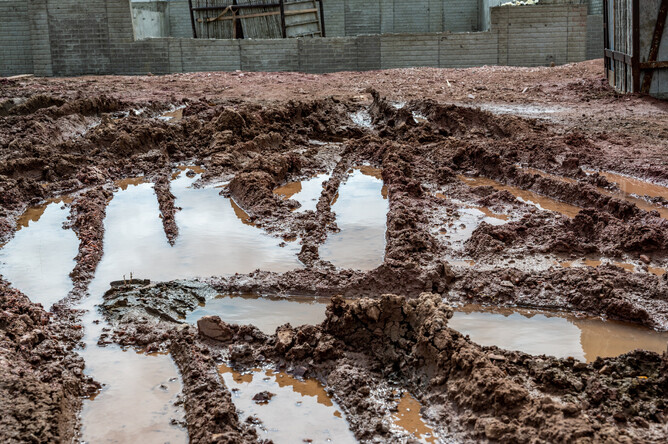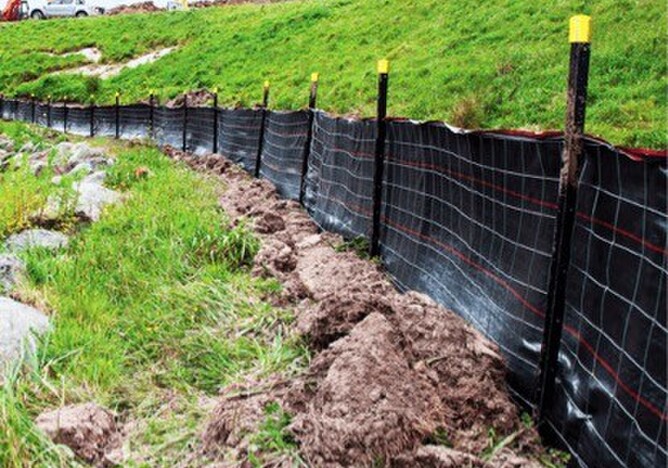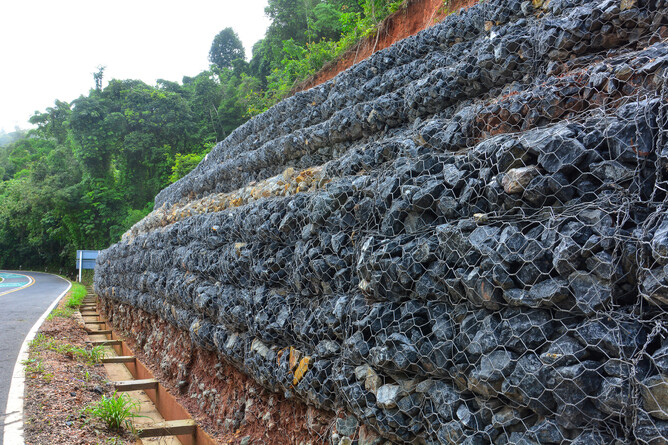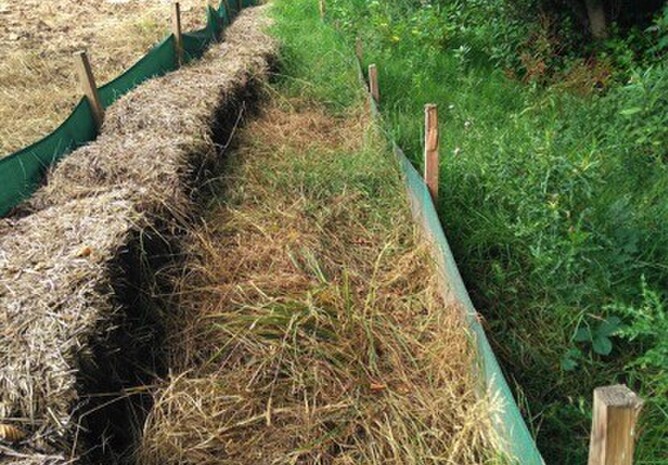In the face of escalating rainfall patterns caused by climate change, the construction industry must prioritise silt control and establish proper access ways on building sites. By adopting effective measures such as hay bales, mud textiles, geo textiles, gabion cages, and higher GAP sizing rocks, erosion and silt run-off is contained, at the same time promoting sustainable construction practices and meeting Council requirements.
Picture: Mud & silt barrier properly installed to mitigate flow into creek bed.
Five key factors which can positively support your attempts to meet council environmental requirements for silt and water run-off management.
Uncontrolled sediment runoff poses a significant threat to water bodies, impacting aquatic ecosystems, drinking water supplies, and overall environmental health. Recognising this challenge, builders and developers must prioritise silt control to prevent sediment-laden runoff from entering waterways.
Hay bales have emerged as a practical solution for diverting flow and preventing erosion on construction sites. By strategically placing hay bales in channels and slope areas, they effectively filter sediment, allowing cleaner water to pass through. These affordable and readily available materials provide a natural barrier against runoff, reducing the risk of silt deposition in nearby water bodies.
To bolster silt control efforts, the construction industry can employ innovative solutions such as mud textiles and geo textiles. These specialised fabrics help stabilise soil and prevent erosion by enhancing filtration and water flow. Mud textiles are designed to contain sediments and facilitate water infiltration, while geo textiles provide reinforcement and stabilization for construction access ways. By incorporating these materials into construction practices, the industry can minimize sediment runoff and maintain water quality standards.
Gabion cages, constructed of wire mesh or welded wire panels, offer an effective way to control and redirect water flow on construction sites. Filled with rocks of various sizes, these cages act as barriers, dissipating energy and reducing erosive forces. The rocks used in Gabion cages provide stability and resist displacement, preventing erosion channels from forming. Additionally, Gabion structures can be strategically placed to channel runoff away from sensitive areas, preserving water quality and minimising the impact of sediment transport.
In constructing access ways, using higher GAP sizing rocks as a base material offers multiple benefits. These larger rocks create a stable foundation that can withstand heavy rainfall and subsequent erosion. The increased size prevents displacement and aids in the natural percolation of water, reducing surface runoff. By incorporating these rocks into access way design, builders can ensure durable, erosion-resistant pathways that promote efficient site access while minimizing sediment transport.
Picture: Gabion cages filled with large size GAP rocks.
Picture: Hay bales used to mitigate silt run-off into wetlands.
As climate change brings about more frequent and intense rainfall events, silt control and proper access ways become paramount in the construction industry. Implementing measures such as hay bales, mud textiles, geo textiles, gabion cages, and higher GAP sizing rocks can effectively mitigate erosion, protect water quality, and contribute to environmentally conscious construction practices.
Auckland Aggregates carries a hay bales, high GAP Gabion rock and textiles by order for pickup or delivery. CLICK HERE FOR MORE INFORMATION OR CALL 027 4936076.





